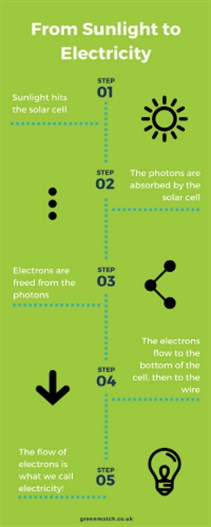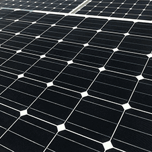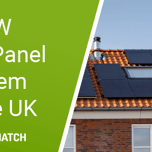Answer these simple questions and we will find you the BEST prices
Which type of solar quotes do you need?
It only takes 30 seconds
100% free with no obligation

Get up to 4 quotes by filling in only 1 quick form

Slash your energy bills by installing solar panels

For the average 2-3 bedroom house
- GreenMatch
- Solar Energy
- Solar Panels
- Photovoltaic Cells
Photovoltaic Cells
What Are Photovoltaic Cells?
A solar panel for homes are made of a group of solar cells connected electrically and enclosed in a frame. The photovoltaic (or solar) cells are made of semiconductor materials such as silicon and are responsible for turning sunlight into electricity by exploiting the photovoltaic effect. But how does that happen?

Sunlight is made of tiny particles of energy called photons. The amount of sunlight that hits the Earth in one hour would be enough to satisfy a year’s worth of energy demand. Solar cells are composed of two layers, one negative and one positive, that create an electric field. When photons are absorbed in the cell, the electrons are freed and led toward the bottom of the cell and through a wire, thus generating electricity. Solar panels generate direct current (DC) which is then converted to alternate current (AC) to be used daily by various appliances. If the electricity is not used, it can be turned to DC once more and sold back to the grid. Solar cells contained in domestic systems can convert around 20% of the sunlight they receive into electricity, although some systems designed for commercial purposes can reach 40%, they are way more expensive. Advancements in technology will surely help increase efficiency while bringing down the prices.
Since photovoltaic cells work by absorbing sunlight, they do not produce electricity during the night, but they do work on cloudy days despite losing some efficiency. You will have to resort to alternative power sources for the dark hours or integrate your solar system with batteries. Solar battery storage prices range between £1,500 and £6,000 depending on the size, battery material, capacity, and lifespan, but it can allow you to use green energy all day long. A few more considerations should be made before investing in photovoltaics:
What Are the Benefits of Photovoltaic Cells?
Solar energy, as you may know, is completely green and will help you significantly reduce your carbon footprint. Despite the high initial investment cost, solar panels pay for themselves in a relatively short time and will lead to huge savings on your energy bills. Here are the main benefits of solar cells/panels:
How Much Do Photovoltaic Cells Cost?
Since photovoltaic cells are the modules that compose solar panels, they are not sold individually. The price of solar panel systems varies depending on the size of the instalment, and the starting price is around £3,000. The system will pay back in around 10 years, but the period may vary depending on the amount of sunlight that it receives. Needless to say, places with a higher sun exposure will be more advantaged, providing a higher efficiency and shorter payback. Constant technological advancements are helping decrease costs and improve efficiency: the first solar cells only converted 1% of the sunlight they received into electricity and were 99% more expensive. And that was in the 70s!
Are You Ready to Invest in Photovoltaic Cells?
If you have gone through all the information and have decided to invest in photovoltaic cells, your next step would be to find out about suppliers and prices, which can be a lengthy process.
We can help you skip the research part and get that information quickly. Simply fill in the form at the top of this page to receive four non-binding quotes from our trusted suppliers, all completely for free.
Fill in the form in just 1 minute
We strive to connect our customers with the right product and supplier. Would you like to be part of GreenMatch?





